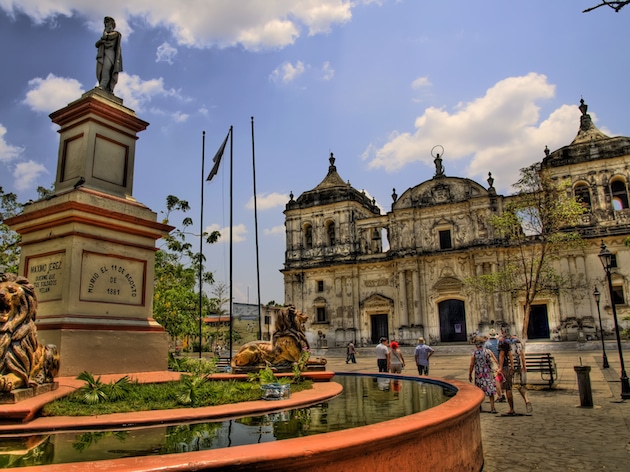
When I decided to meet up with a friend of mine for a week-long trip to Nicaragua, I was set to experience what I thought was the best of what the country had to offer: adrenaline pumping treks up and down volcanoes. I was ready for a trip teeming with non-stop action; however, somewhere along the way the pace got slowed down and I also got a look at the country’s human side.
With only a week to spend in the entire country, my main goal of the trip was to learn how to volcanoboard, a new extreme sport where riders take a toboggan down the silty slopes of a volcano, reaching speeds of 50 mph (80 kph). As with any great adventure, though, my trip was filled with unexpected twists and turns, adding a whole new level of adventure and discovery to the journey.
My Nicaraguan Arrival
I could hardly believe my eyes when I finally arrived to the airport in Nicaragua’s capital, Managua. Here, I was quickly greeted with a big welcome sign and a happy reunion from my friend. Eager as I was to get on with our adventure, he quickly ushered me on to a “chicken bus” — the common name for inter-city transit in Central America.
Before arriving in my destination, I was a bit curious as to how this name came about, but once I took my seat on the rundown and overcrowded school bus next to a box of actual live chickens, the meaning became quite clear. While the chicken buses offered less legroom than the Greyhound buses I was used to back in Canada. But what the bus lacked in space, it more than made up for in personality. Aside from the coo-ing of the chickens, the driver was pumping lively Latin music out of the bus’ stereo and occasionally pulling over to let vendors walk the aisle to sell fruits and pastries. Famished after my long flight in, I bought what turned out to be the most scrumptious banana I had ever tasted and munched happily while bopping along to some salsa beats.
The destination of our chicken bus excursion was León, a city home to some of the oldest Spanish colonial buildings on the continent and brimming with museums and art galleries.
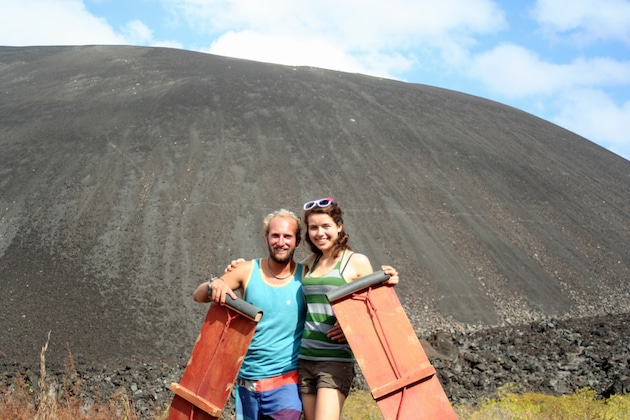
The Cerro Negro volcano
Most of all however, it’s the closest access point to Cerro Negro, an active volcano and birthplace of the infamous sport of volcanoboarding. While the sport has gained more popularity from the international community than the local Nicaraguans, the residents have realized the business potential the activity brings and there are many local guides available to hire.
After securing our guide for the next day, my friend and I attempted to check into our hostel for the night. Unfortunately, reception double-booked our room and we were left without a place to stay. There were a few other hostels along the street, but each of them held matching “no vacancy” signs, oddly enough in both Spanish and English.
A Pleasant And Unexpected Stay
Getting desperate, I approached a woman on the street and asked her, in broken Spanish, if she knew anywhere else to stay. She replied, in equally broken English, that as we were coming up on New Year’s Eve, all of the hotels were likely to be full; however, if we wanted we could stay with her family as they occasionally rented out their spare bedroom as a homestay.
I could tell from the way she offered that she was honestly looking to help out a pair of stranded travelers, and we agreed to spend the night with her. With that, she promptly walked us back home, excitedly telling half English and half Spanish stories about her family and her life in León.
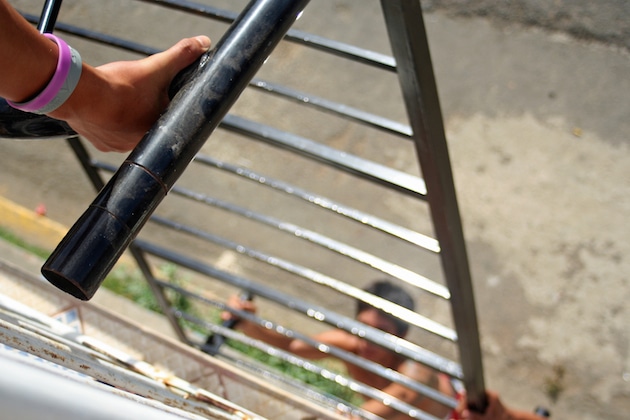
Helping get our room set up for the night
When we arrived at her house, she explained that some furniture would need to be rearranged for our arrival. My friend and I, of course, offered to help get our room sorted. Before we knew it, we were helping a bed to gently descend an entire storey through an outdoor window while discussing the best nearby surf spots with our host’s son. By the time our room was sorted, we had arranged a full surf excursion with our new friend, David.
Volcanoboarding
Tired after a full day of traveling and room reorganizing, that night I quickly fell asleep. After a quick snooze however, my buddy and I were soon on our way to Cerro Negro in the back of a van with some toboggans and our guide, Diego. En route to the volcano, Diego explained that Cerro Negro was one of the youngest volcanoes in Nicaragua and part of the Cordillera de los Maribios Mountain Range, which spans from León to Chinandego and has it’s highest peak atop the San Cristóbal mountain at 5,725 feet (1,745 meters). He also explained that since the slopes are covered in volcanic ash, it was void of any trees or vegetation. This fact, partnered with the steepness of the slopes makes it perfect for sliding down and in 2005, the owner of Bigfoot Hostel in León started offering volcanoboarding trips. They quickly gained popularity and now additional businesses, like Diego’s, have joined in with offering these excursions.
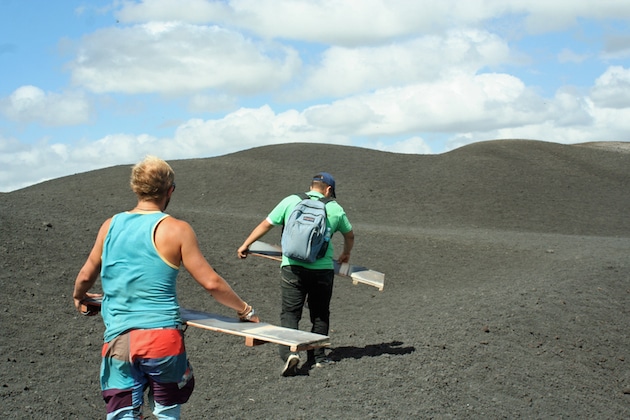
Making our way to Cerro Negro’s summit
In no time at all, we had reached the base and began our hour-long trek to the summit, toboggans in tow. While the hike itself was short, the winds near the peak were blustering furiously, eventually getting to the point where I could no longer hang out without getting tossed around by the wind.
Diego not only jumped in to carry my board, he also turned out to be an expert in keeping the mood light, acting as our cameraman for an entire photoshoot of cheesy mountaintop shots.
Once we finally arrived at our boarding starting point, Diego provided an explanation about how much leaning forward or backward into the hill would affect speed. Less then a minute later, I was putting this explanation to the test as I bolted down the volcanic slopes. The thrill was unbelievable as I slowly leaned forward, increasing my overall speed while still maintaining control — or at least enough of it to avoid any serious crashes. By the time I had arrived at the bottom, I was bursting with excitement watching my friend commander down the same the same slope with even more reckless ambition. Once we had both reached the bottom in one piece, Diego bounded down the hill on foot in record-breaking time.
A Cheesy Detour
Our drive back was a non-stop stream of excited chatter about the thrill of the ride until Diego suddenly slammed the breaks and I looked up to see a parade of cows and goats slowly marching in front of us. Diego let out a sigh and explained that since the forest was so thick in this area, farmers need to walk their herds along the road in order to get their livestock from their farms to their pastures and that we’d likely be stuck behind them for a while. Curious, I asked if agriculture was still a large industry in Nicaragua.
Diego began to explain that it used to be the country’s main industry until the 1980s, when political rebels called the Contras destroyed many farms and plantations. The group was formed when several smaller rebel organizations joined forces to stand up for Nicaragua’s lower classes and fight government corruption. The US government provided them with military and financial support (which Diego said was only because the opposing side was backed by the soviets); however, the group faced several human rights violations before agreeing to a voluntary demobilization in 1989.
Diego then went on to admit that his family was forced to flee their farm during this Nicaraguan Revolution. After a brief pause, he changed his tone and said that since then, his parents opened a restaurant specializing in quesillos, a special dish from León comprised of cheese, onions and vinegar wrapped in a tortilla. With pride, he then added that his family had won several quesillo competitions.
Learning this, I promptly told Diego that he would now have to take us to his parents’ restaurant and let us try the dish. He was more than happy to oblige.
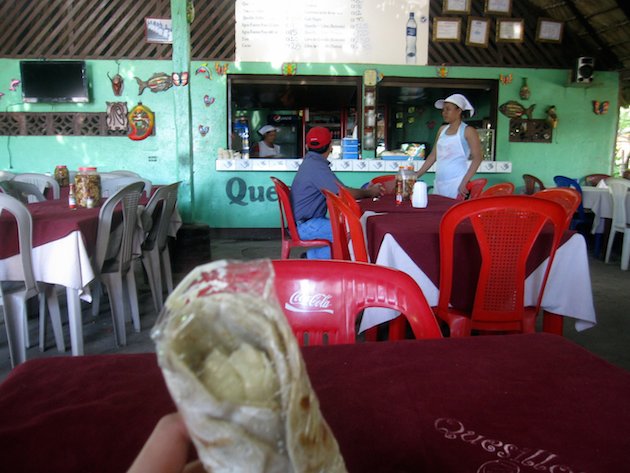
A traditional Nicaraguan quesillo. Photo courtesy of Stefan Krakowski and Flickr
Soon enough, Diego was ordering three quesillos for himself, my friend and I, after which was presented with a plastic bag that seemed to be exploding with cheese.
Diego laughed. “The messier a food is, the more delicious it’s guaranteed to be.” Then, he ripped off the top corner of the bag and began digging in.
I tried to follow suit, but my first bite resulted in more cheese ending up on the table than in my mouth. Nonetheless, the part of the bite I was able to ingest was delicious and I happily slurped away.
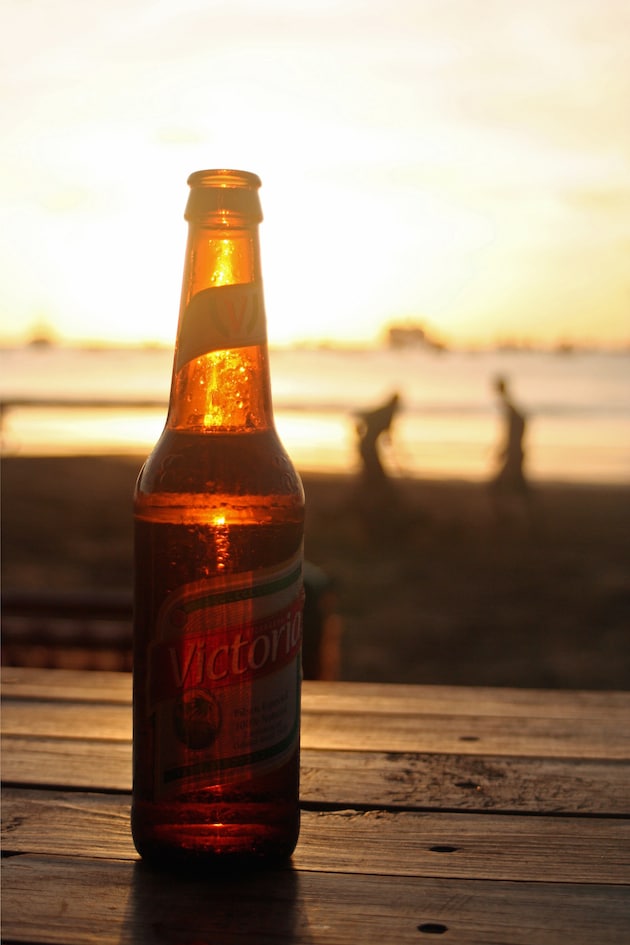
Surfing Into The Sunset
From that point onwards, the rest of the trip was filled with beach days and surf excursions, thanks to our friend, David. Not only did he know all the best surf spots (and after surf spots for drinks), he also gave me some handy pointers for improving my technique.
Top photo credit Cathedral in León. Photo courtesy of Javier Losa and Flickr
Have you had a transformative local experience on your travels? Please share in the comments below.

Jessica Festa is the editor of the travel sites Jessie on a Journey (http://jessieonajourney.com) and Epicure & Culture (http://epicureandculture.com). Along with blogging at We Blog The World, her byline has appeared in publications like Huffington Post, Gadling, Fodor’s, Travel + Escape, Matador, Viator, The Culture-Ist and many others. After getting her BA/MA in Communication from the State University of New York at Albany, she realized she wasn’t really to stop backpacking and made travel her full time job. Some of her most memorable experiences include studying abroad in Sydney, teaching English in Thailand, doing orphanage work in Ghana, hiking her way through South America and traveling solo through Europe. She has a passion for backpacking, adventure, hiking, wine and getting off the beaten path.








